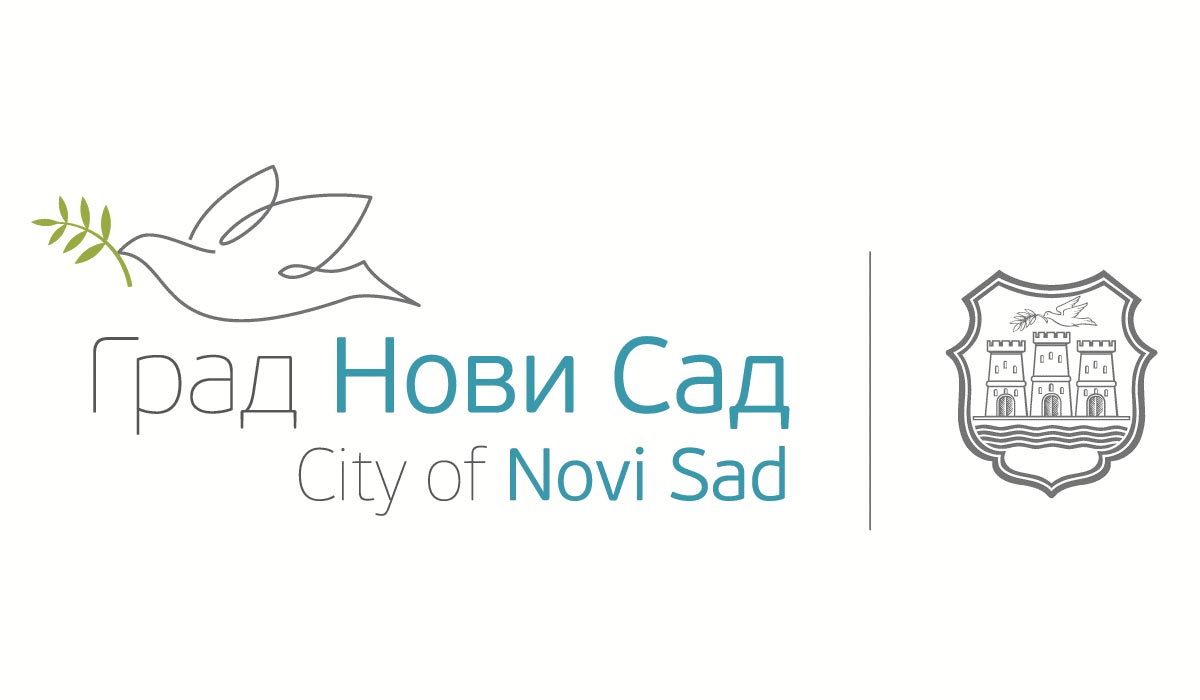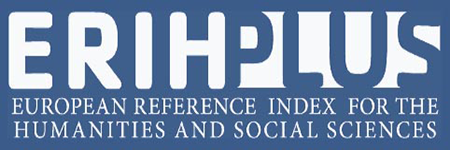APPIAN’S ILLYRIKE: THE FINAL STAGE OF THE ROMAN CONSTRUCTION OF ILLYRICUM
DOI:
https://doi.org/10.19090/i.2016.27.69-83Keywords:
Appian, Illyricum, Roman empire, imperial geographyAbstract
Appian’s Illyrian book (Illyrike) was originally intended to be just an appendix to his Macedonian book and today remains the only extant ancient work dealing with the early history of Illyricum which is preserved in its entirety. In this short work Appian puts together different local and regional histories in order to create a unified historical narrative and determines the historical and mythological coordinates of Illyricum inside the ancient world. This paper will discuss Illyrike in the context of the Roman construction of Illyricum as a provincial space, similar to some other regions in continental Europe such as, for example, Gaul or Britain. They were all firstly created through the needs of Roman political geography and later written into literary knowledge through the works of ancient history and ethnography. This paper will argue that Appian’s Illyrike represented the final stage of the Roman construction of Illyricum from an imaginary to a provincial space, which was the point of its full coming of age as an integral part of the ancient world and the Roman Empire.
Downloads
References
Ando, C. Imperial Ideology and Provincial Loyalty in the Roman Empire, Berkeley/Los Angeles, University of California Press, 2000.
Barnes, C. L. H. Images and Insults: Ancient Historiography and the Outbreak of the Tarentine War. Historia Einzelschriften 187, Stuttgart: Steiner, 2005.
Bojanovski, I. Dolabelin sistem cesta u rimskoj provinciji Dalmaciji, Djela 47/2, Sarajevo: Akademija nauka i umjetnosti BiH, 1974.
Brodersen, K. Epitaphios: Appianos and his treasured Eutychia, in: Welch 2015, 341–350.
Castiglioni, M. P. ‘Myth as an instrument for the study of Greek and indigenous identities I: Greek myths in the Illyrian area’, in: J. Carvalho (ed.), Religion, Ritual and Mythology: Aspects of Identity Formation in Europe, Pisa: Edizioni Plus, 2006, 127–141.
______. ‘Genealogical myth and political propaganda in antiquity’, in J. Carvalho (ed.), Religion and Power in Europe: Conflict and Convergence, Pisa: Edizioni Plus, 2007, 165–181.
______. Cadmos-serpent en Illyrie. Itinérarie d’un héros civilisateur. Pisa: Edizioni Plus, 2010.
Clarke, K. 'In Search of the Author of Strabo's Geography', JRS 87, 1997, 92–110.
______. Between Geography and History: Hellenistic Constructions of the Roman World, Oxford: Oxford University Press, 1999.
______. ‘An island nation: re-reading Tacitus’, Agricola’, JRS 91, 2001, 94–112.
Cruz Andreotti, G., Le Roux, P. and Moret, P. (eds.) La invención de una geografía de la Península Ibérica Vol. 2: La época imperial. Actas del Coloquio Internacional celebrado en la Casa de Velázquez de Madrid entre el 3 y el 4 de abril de 2006, Málaga/Madrid: Servicio de Publicaciones del Centro de Ediciones de la Diputación de Málaga/Casa de Velázquez, 2006.
Čače, S. ‘Ime Dalmacija u 2. i 1. st. prije Krista’, Radovi Filozofskog Fakulteta u Zadru 40/27, 2003, 29–48.
Delev, P. ‘The Burning of the Temple at Delphi, the Roman Governor L. Scipio and the Rout of the Scordisci’, in A. Rufin Solas (ed.), Armées grecques et romaines dans le nord des Balkans. Conflits et Integration des Communautes Guerrieres. Akanthina 7, Gdánsk & Toruń: Foundation Traditio Europae, 2013, 91–103.
Dobiáš, J. Studie k Appianovĕ knize Illyrské, Prague: Naklada Filosofické fakulty University Karlovy, 1930.
Domić-Kunić, A. ‘Literarni izvori za iliričke provincije (Dalmaciju i osobito Panoniju) u Naturalis Historia Plinija Starijeg’, Vjesnik Arheološkog muzeja u Zagrebu, ser. III 37, 2004, 119–171.
Dueck, D. ‘The Geographical Narrative of Strabo of Amasia’, in K. A. Raaflaub and R. J. A. Talbert (eds.), Geography and Ethnography: Perceptions of the World in Pre-Modern Societies, Malden MA/Oxford/Chichester: Wiley-Blackwell, 2010, 236–251
Dzino, D. ‘Welcome to the Mediterranean semi-periphery: The place of Illyricum in book 7 of Strabo’, Živa antika 56, 2006, 113–128.
______. ‘Strabo 7, 5 and imaginary Illyricum’, Athenaeum 96(1), 2007, 173–192.
______. Illyricum and Roman Politics 229 BC–AD 68, Cambridge: Cambridge University Press, 2010.
______. ‘Illyrians’ in ancient ethnographic discourse’, Dialogues d’Histoire Ancienne 40(2), 2014, 45–65.
______. ‘Constructing Illyrians: Prehistoric inhabitants of the Balkan Peninsula in the early modern and modern perceptions’, Balkanistica 27 (2014a), 1–39.
Evans, R. ‘The cruel sea? Ocean as boundary marker and transgressor in Pliny’s Roman Geography’, Antichthon 39, 2005, 105–118.
Foucault, M. Power/Knowledge: Selected Interviews and Other Writings 1972-1977, ed. C. Gordon, London: Pantheon Books, 1980.
Gómez Espelosín, F. J. ‘Appian’s Iberike. Aims and attitudes of a Greek historian of Rome’, ANRW, 2.34.1, 1993, 403–427.
Gowing, A. The Triumviral Narratives of Appian and Cassius Dio, Ann Arbor: University of Michigan Press, 1992.
Gračanin, H. ‘Illyricum of the 2nd and 3rd centuries AD in the works of Latin and Greek historians’, in: M. Šegvić, I. Mirnik (eds.), Illyrica Antiqua. Ob honorem Duje Rendić-Miočević, Zagreb: FF Press, 2005, 287–298.
Hahn, I. and Németh, G. ‘Appian und Rom’, ANRW, 2.34.1, 1993, 364–402.
Katičić, R. Illyricum Mythologicum, Zagreb: Antibarbarus, 1995.
Kovács, P. A History of Pannonia during the Principate, Abhandlungen zur alten geschichte 65, Bonn: Dr Rudolf Habelt GmbH, 2014.
Kozličić, M. Historijska geografija istočnog Jadrana u starom vijeku, Split: Književni krug, 1990.
Krebs, C. B. ‘Imaginary geography in Caesar’s Bellum Gallicum’, AJPh 127, 2006, 111–136.
Lund, A. A. ‘Versuch einer Gesamtinterpretation der “Germania” des Tacitus, mit einem Anhang: Zu Entstehung und Geschichte des Namens und Begriffs “Germani”’; ‘Kritischer Forschungsbericht zur “Germania” des Tacitus’, ANRW 2.33.3, 1991, 1858–2222.
Malkin, I. 'A Colonial Middle Ground: Greek, Etruscan and Local Elites in the Bay of Naples', in C. L. Lyons, J. K. Papadopulos (eds.) The Archaeology of Colonialism, Los Angeles: Getty Research Institute, 2002, 151–181.
Marasco, G. ‘L’Illyriké di Appiano’, ANRW, 2.34.1, 1993, 463–495.
Marion, Y. 1998 ‘Pline et l’Adriatique orientale: quelques problèmes d’interpretation d’Histoire Naturelle 3.129–152’, in: P. Arnaud and P. Counillon (eds.), Geographica Historica. Ausonius Études 2, Bordeaux/Nice: Ausonius, 1998, 119–135.
______. 2006 ‘Strabon et l’Illyrie. Essai de cartographie’, in S. Čače, A. Kurilić, F. Tassaux (eds.) Les routes de l’Adriatique antique. Ausonius Éditions 16, Bordeaux/Zadar: Ausonius/Sveučilište u Zadru, 2006, 31–38.
Matijašić, I. ‘“Shrieking like Illyrians”: Historical geography and the Greek perspective of the Illyrians in the 5th century BC’, Arheološki Vestnik 62, 2011, 289–316.
______., ‘Geografia del mondo Illirico tra v e iv secolo a.C.’, in Y. Marion and F. Tassaux (eds.), AdriAtlas et l'histoire de l'espace adriatique du VIe s. a.C. au VIIIe s. p. C., Ausonius editions: Scripta Antiqua 79, Bordeaux: Ausonius 2015, 131–148.
Mitchell, S. “Ethnicity, Acculturation and Empire in Roman and Late Roman Asia Minor”, in S. Michell and G. Greatrex (eds.), Ethnicity and culture in late antiquity, Swansea: Classical Press of Wales, 2000, 117–150
Mlekuž, D. ‘Who were the Cyclopes? Odyssey and Neolithic, Eneolithic and Bronze Age pastoralists from the east Adriatic coast and Dinarides’, in: M. Blečić, M. Črešnar, B. Hänsel, A. Hellmuth, E. Kaiser, and C. Metzner-Nebelsick (eds.), Scripta praehistorica in honorem Biba Teržan. Situla 44. Ljubljana: Narodni muzej Slovenije, 2007, 69–82.
Nicolet, C. Space, Geography and Politics in the Early Roman Empire, Ann Arbor MI: University of Michigan Press, 1991.
O’Gorman, E. ‘No place like Rome: identity and difference in the Germania of Tacitus’, Ramus, 22, 1993, 135–154.
Osgood, J. ‘The pen and the sword: writing and conquest in Caesar’s Gaul’, ClAnt 28(2), 2009, 328–358.
______. ‘Breviarium totius imperii: The background of Appian’s Roman History’, in: Welch 2015, 23–44.
Ørsted, P. Roman Imperial Economy and Romanization, Copenhagen: Museum Tusculanum Press, 1985.
Papazoglu, F. The Central Balkan Tribes in pre-Roman Times, Amsterdam: Hakkert, 1978.
Popović, P. ‘ … cum a Scordiscis Dacisque premeretur’, in: H. Dobrzańska, W. Megaw and P. Poleska (eds.), Celts on the Margin: Studies in European Cultural Interaction VII c. BC – I c. AD dedicated to Zenon Woźniak, Kraków: Institute of Archaeology and Ethnology of the Polish Academy of Sciences, 2005 77–83.
Potter, D. Literary Texts and the Roman Historian, New York: Routledge, 1999.
Powell, A., Welch, K. (eds.) Julius Caesar as Artful Reporter: The War Commentaries as Political Instruments, London/Swansea: Duckworth/Classical Press of Wales, 1998.
Purcell, N. ‘The Creation of a provincial landscape: The Roman impact on Cisalpine Gaul’, in T. Blagg and M. Millett (eds.), The Early Roman Empire in the West, Oxford: Oxbow Books 1990, 7-29.
Rich, J. ‘Appian, Polybius and the Roman’s war with Antiochus the Great: A study in Appian’s sources and methods’, in Welch 2015, 65–124.
Riggsby, A. M. Caesar in Gaul and Rome: War in Words, Austin: University of Texas Press, 2006.
Riva, C. 'Ingenious Inventions: Welding Ethnicities East and West', in: S. Hales and T. Hodos (eds.) Material Culture and Social Identities in the Ancient World, Cambridge: Cambridge University Press, 2010, 79–113.
Rossignoli, B. L’Adriatico greco. Culti e miti minori, Rome: “L’Erma” di Bretschneider, 2004.
Rutledge, S. H. ‘Tacitus in tartan: textual colonization and expansionist discourse in the Agricola’, Helios 27(1), 2000, 75–95.
Said, E. W. Orientalism, London: Routledge and Kegan Paul, 1978.
Salway, B. ‘Travel, itineraria and tabellaria’, in C. Adams and R. Laurence (eds.), Travel and Geography in the Roman Empire, London/New York: Routledge, 2001, 22–66.
Schadee, H. ‘Caesar’s construction of northern Europe: inquiry, contact and corruption in De Bello Gallico’, CQ 58(1), 2008, 158–180.
Sterling, G. E. Historiography & Self-definition: Josephos, Luke-Acts & Apologetic Historiography. Supplements to Novum Testamentum 64, Leiden: Brill, 1992.
Šašel Kos, M. A Historical Outline of the Region between Aquileia, the Adriatic and Sirmium in Cassius Dio and Herodian, Ljubljana: Slovenska Akademija znanosti in umetnosti, 1986.
______. ‘Cadmus and Harmonia in Illyria’, Arheološki Vestnik 44, 1993, 113–136.
______. ‘Caesar, Illyricum, and the hinterland of Aquileia’, in G. Urso (ed.), L’Ultimo Caesare. Scritti riforme progetti poteri congiure. Atti del convegno internazionale Cividale del Friuli, 16-18 settembre 1999. Centro Ricerche e Documentazione sull’Antichità classica Monografie 20. Rome: Centro Ricerche e Documentazione sull’Antichità classica, 2000, 277–304.
______. ‘Mythological stories concerning Illyria and its name’, in P. Cabanes, J.-L. Lamboley (eds.), L’Illyrie méridionale et l’Épire dans l’Antiquité IV, Paris: De Boccard, 2004, 493–504.
______. Appian and Illyricum. Situla 43, Ljubljana: Narodni muzej Slovenije, 2005.
______. ‘Pannonia or Lower Illyricum?’, Tyche 25, 2010, 123–130
______. ‘Peoples of the northeastern fringes of the Greek world: Illyria as seen by Strabo’, in J.-L. Lamboley and M.-P. Castiglioni (eds.), L’Illyrie méridionale et l’Épire dans l’Antiquité V, Paris: De Boccard, 2011, 617–629.
Talbert, R. J. A. ‘Rome’s provinces as framework for world-view’, in L. de Ligt, E. A. Hemelrijk, and H. W. Singor (eds.), Roman Rule and Civic Life: Local and Regional Perspectives, Leiden: Brill, 2014, 21–38
Todorova, M. Imagining the Balkans, Oxford: Oxford University Press, 1997.
Welch, K. (ed.) Appian's Roman History: Empire and Civil War, Swansea: Classical Press of Wales, 2015.
Wilkes, J. J. Dalmatia, Cambridge Mass: Harvard University Press, 1969.
Wiseman, T. P. ‘Practice and theory in Roman historiography’, History: The Journal of the Historical Association 66, 1981, 375–393.













